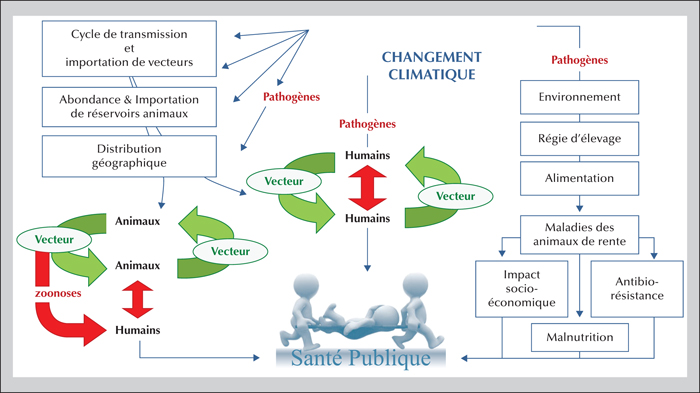Environnement, Risques & Santé
MENUEmergence of infectious diseases associated with climate change: rural and urban challenges Volume 15, issue 4, July-August 2016
Figures
Département de sciences cliniques
Faculté de Médecine Vétérinaire
CP 5000 St-Hyacinthe
Québec
Canada J2S 7C6
Laboratoire national de microbiologie à Saint-Hyacinthe
Agence de la santé publique du Canada
3200 Sicotte
C.P. 5000
Saint-Hyacinthe
Québec
Canada J2S 7C6
- Key words: infection, climate change, vector-borne diseases, emergence, zoonoses
- DOI : 10.1684/ers.2016.0889
- Page(s) : 312-6
- Published in: 2016
About 875 infectious diseases affecting humans are zoonoses. Over the last 75 years, more than 300 emerging diseases have been identified, three quarters of which are zoonoses. The epidemiology of several of these diseases, in addition to that of non-zoonotic diseases such as malaria and dengue, seems to be affected by climate change. This is particularly true for vector-borne diseases, which account for 17% of the estimated infectious disease burden worldwide. There is a growing body of evidence about the effect of climate on Lyme disease and malaria in some regions. Extreme weather events associated with climate change will also have an effect on infectious diseases in livestock, making rural communities vulnerable. There is a pressing need to model the effects of climate change on ecological and societal-human factors simultaneously. This will require more resources for surveillance and transdisciplinary research now. To accomplish this, we need a collaborative effort anchored in change.


